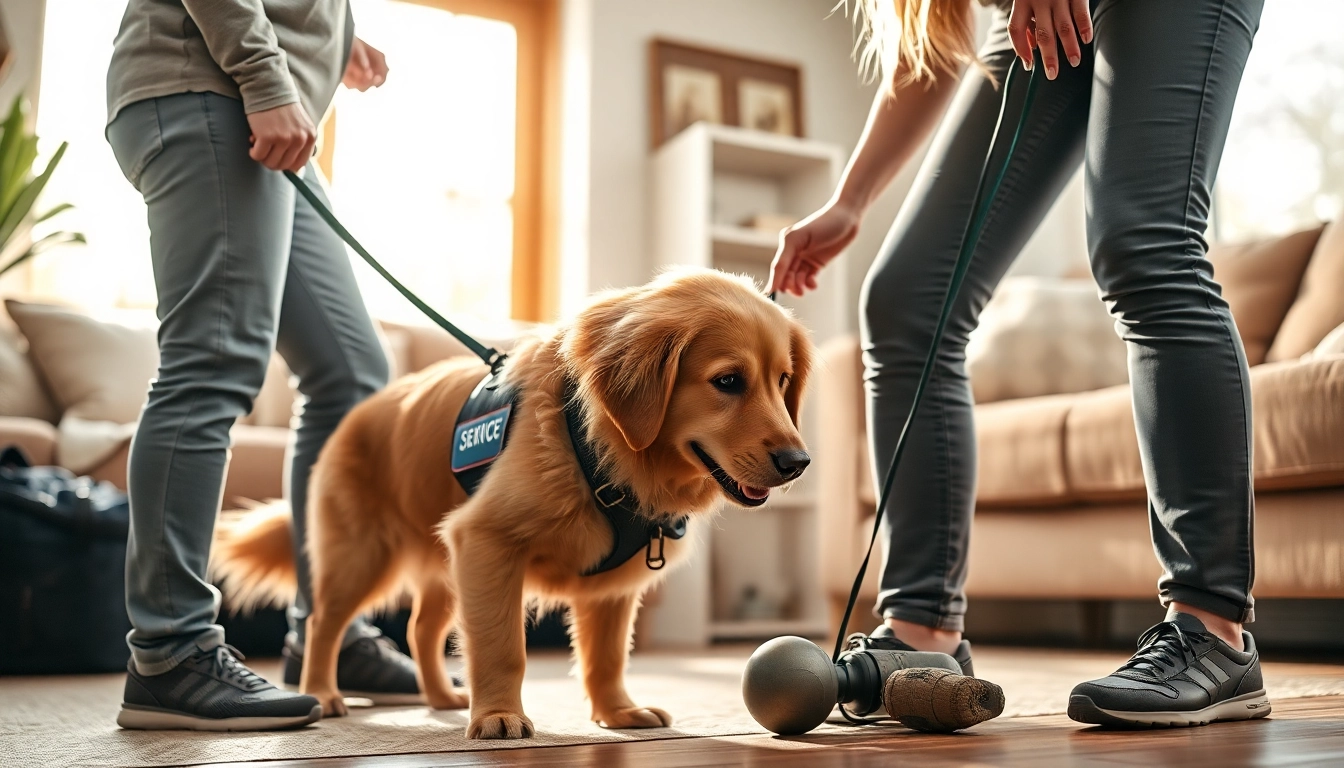What Are Service Dogs?
Definition and Purpose of Service Dogs
Service dogs are highly trained canines that provide assistance to individuals with disabilities. The essential purpose of these dogs is to perform specific tasks that directly aid their handlers in navigating daily life activities. Unlike emotional support animals, service dogs undergo rigorous training to develop skills that help mitigate their owner’s disabilities, allowing for greater independence and improved quality of life. Their tasks can vary widely, from guiding visually impaired individuals to alerting those with hearing impairments, helping with mobility, or even managing psychiatric conditions. The bond between a service dog and its handler often goes beyond assistance; these dogs become integral members of the family, providing companionship and emotional support.
History and Evolution of Service Dogs
The concept of using dogs for assistance dates back several centuries, with documented evidence of their roles in helping individuals with disabilities. The modern use of service dogs began to gain recognition around World War II when dogs were first trained to aid veterans with physical injuries and psychological trauma. In the ensuing decades, awareness grew regarding the abilities of dogs to assist those with various disabilities, including visual impairments, mobility challenges, and more recently, mental health conditions. This evolution has led to the establishment of training programs and legal frameworks that support the rights of individuals who depend on service dogs.
Legal Rights of Service Dogs
In the United States, the Americans with Disabilities Act (ADA) provides clear guidelines on the access rights of service dogs. Under the ADA, service dogs are defined as dogs that are individually trained to do work or perform tasks for people with disabilities. This legislation grants service dogs the right to accompany their handlers in various public spaces, including restaurants, stores, and public transportation. However, it is crucial for handlers to understand that emotional support animals or therapy dogs do not share these same rights under the law, as they do not perform specific tasks related to their owner’s disability.
Types of Service Dogs and Their Functions
Mobility Assistance Service Dogs
Mobility assistance service dogs are specifically trained to aid individuals with physical disabilities. They help their handlers with tasks such as retrieving dropped items, providing support while walking, or assisting with balance. These dogs can be particularly beneficial for people who have mobility challenges after an injury, surgery, or due to a chronic condition. The training for these dogs can include tasks such as pushing wheelchairs, opening doors, and even alerting emergency services if necessary. The independence that a mobility assistance dog provides can significantly enhance the quality of life for individuals with physical challenges.
Medical Alert Service Dogs
Medical alert service dogs are trained to recognize specific medical conditions and alert their handlers to potential crises. For instance, these dogs can detect changes in blood sugar levels for individuals with diabetes or alert an epileptic handler before a seizure occurs. Their ability to notice subtle signs that may go unnoticed by their human counterparts is a testament to their specialized training and keen sense of smell. These alerts can be life-saving and help individuals manage their conditions more effectively. The partnership between handlers and medical alert dogs often fosters a sense of safety and reassurance.
Emotional Support Service Dogs
Emotional support service dogs are trained to provide therapeutic benefits to their handlers, particularly individuals facing mental health challenges like anxiety, PTSD, or depression. While they may not perform specific tasks as traditional service dogs do, their presence significantly impacts emotional well-being. These dogs offer companionship, comfort, and a sense of security, helping their handlers to cope with everyday stressors. The bond formed between an emotional support dog and its owner can be profound, creating a relationship that provides both emotional and psychological support.
Benefits of Having Service Dogs
Physical Support and Independence
The presence of a service dog can lead to increased independence for individuals with disabilities. By performing essential tasks that aid in mobility, organization, and everyday life, service dogs empower their handlers to lead more autonomous and fulfilling lives. Many individuals report that having a service dog minimizes feelings of isolation and enables them to participate more fully in society.
Emotional and Psychological Benefits
Beyond their physical assistance, service dogs provide unparalleled emotional support. For individuals with mental health challenges, the companionship of a service dog can reduce anxiety and depression, leading to improved psychological resilience. The unconditional love and loyalty of a service dog can significantly enhance overall mental health outcomes, making them vital components of a treatment plan for many individuals.
Social Integration for Individuals with Disabilities
Service dogs can serve as social catalysts, helping their handlers to engage more easily with others. The presence of a dog often draws social interactions, as people are naturally inclined to approach and engage with animals. This can lead to improved social opportunities for individuals with disabilities, promoting inclusiveness and community involvement, and helping to break down barriers that lead to isolation.
The Process of Getting Service Dogs
Choosing the Right Type of Service Dog
Selecting the appropriate type of service dog is a critical first step for prospective handlers. This choice largely depends on the specific needs and disabilities of the handler. It is essential for individuals to assess their personal situations, considering the type of assistance that will most enhance their daily life. Seeking guidance from professionals in the field can help narrow down the options and ensure a good match between the dog’s training and the handler’s needs.
Training Programs for Service Dogs
Training is a vital component of preparing a service dog for its role. Programs can vary widely in structure and content, but they typically focus on specific tasks that align with the handler’s needs. Well-structured training programs often include socialization, obedience training, and task performance. Many organizations offer programs that provide extensive training for both dogs and handlers, ensuring that a bond is developed and that the dog is comfortable in various environments. It is crucial to choose a training program that meets recognized standards and is tailored to the unique needs of the dog and handler.
Cost and Funding Options for Service Dogs
Acquiring a service dog can be a substantial financial commitment, with costs for training ranging from several thousands of dollars. However, various funding options may be available to help offset these costs. Grants, local assistance programs, and non-profit organizations often provide financial assistance or support for individuals seeking service dogs. Researching and leveraging community resources, such as fundraising initiatives or sponsorship programs, can make acquiring a service dog a feasible option for many individuals.
Caring for Service Dogs: Owner Responsibilities
Daily Care and Training
Owning a service dog comes with significant responsibilities. Daily care, including grooming, feeding, and exercising, is crucial for the dog’s well-being. Additionally, ongoing training is necessary to maintain the skills that the dog has learned. Engaging in regular training exercises not only reinforces learned tasks but also enhances the bond between the handler and the dog. Establishing a routine can help ensure that both the handler and the service dog remain in optimal health.
Health and Wellness for Service Dogs
Regular veterinary check-ups, vaccinations, and preventive care are essential for service dogs to keep them healthy and capable of fulfilling their roles. Nutrition is another critical aspect of their well-being. A balanced diet tailored to the dog’s breed, size, and activity level can significantly impact their performance and longevity. Owners should work closely with veterinarians to create a health plan that considers their service dog’s specific needs.
Navigating Public Spaces with Service Dogs
Handlers of service dogs should be well-versed in their rights and responsibilities when navigating public spaces. Understanding the laws that protect access rights ensures that both the handler and the service dog can participate in society without facing unnecessary barriers. Moreover, handlers must develop strategies for managing their dogs in various environments, from busy streets to restaurants. This can involve exposing the dog to different settings during training, ensuring they are well-adjusted and comfortable in public situations.














Leave a Reply